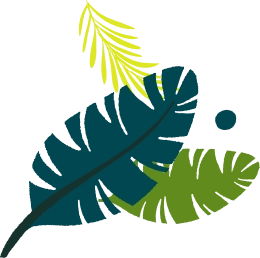


After soaking up the bustle of Ho Chi Minh City, I hopped on a tour bus bound for the Cu Chi Tunnels, one of Vietnam’s most famous war-era attractions. This incredible underground maze lies about 5570 km northwest of the city, and visiting it was like stepping back into history.
The Cu Chi complex was originally built by Viet Cong villagers starting in the 1940s and expanded into a vast network of tunnels by the 1960s. Soldiers lived here, set up hospitals and kitchens, stored weapons, and even held war meetings in secrecy. Above ground, the area was rigged with concealed bunkers, trenches and booby-traps.
Today the site is a national historic relic (honored as a “special national historical site” in 2016) and a sobering reminder of Vietnam’s wartime resilience.
The trip from Ho Chi Minh City to Cu Chi is straightforward. If you’re on a shoestring budget, take public transport: head to the 23/9 Park Bus Terminal (Phòng Vé số 23/9) in District 1. There, I boarded Bus 13 (around 10,000 VND or ~$0.40) which winds out of the city towards Cu Chi. After about 1.52 hours you’ll reach the suburban Cu Chi Bus Station. At that station, it’s a quick transfer onto Bus 79 (about 6,000 VND) that drops you right at the Cu Chi Ben Duoc site in another 45 minutes or so. The whole route only cost a couple of dollars in total, and both buses had air-conditioning!
Just watch your timing: return buses run until about 5:30pm, so plan to depart early if you want a long visit.
Most travelers take a tour indeed, our guide joked that public buses are “cheaper” but for “excellent value” (given the hassle of transfers) they stick with organized tours. Tours usually include hotel pickup by bus or van. For something different, luxury tours also exist (for example, a speedboat ride up the Saigon River to Cu Chi for around 1,990,000 VND), but I preferred the authentic local ride. Although, If you are with yout family then I think a guided tour would be a better value for money.
Taxis or Grab cars are fastest (and costliest), but hey where’s the adventure in that? The road out is scenic (you’ll pass rubber plantations and rice paddies) especially if you rent a motorbike and ride by yourself (roads QL22 or TL15 head straight to Cu Chi). Just be careful on Vietnam’s highways if you’re new to riding.
Most tours target the morning or early afternoon to avoid the midday heat. In fact, many people visit Cu Chi in the morning so they’re back in Saigon by afternoon rush hour. The site is open daily from 7:00 AM to 5:00 PM. If you’re doing it on your own, note the last local bus leaves around 5:30 PM, so don’t linger too late underground.
Built by hand with simple tools, the Cu Chi network eventually stretched over 200+ km of tunneled paths connecting hamlets and battle zones. Visiting the tunnels today really brings that history to life. We started in the open-air War Zone Exhibit: a collection of wartime artifacts, rifles, grenades, scrap metal tanks that tell the story of the guerrilla fighters. There’s also a short video introduction (rough English) that gives context before you enter the underground. The complex is divided into two main sites: Ben Dinh (closer to Saigon, more touristy) and Ben Duoc (a bit farther, quieter). Ben Duoc was my choice; many people consider it the more “authentic” spot with fewer crowds.
Duoc is the best one because it’s not touristy. We hardly saw any lines there, whereas Ben Dinh buses were packed.
Once you decide on a spot, you’ll purchase tickets (roughly 100,000 VND per adult). (Children under 16 get a ~50% discount.) Then it’s into the ground. You’ll enter through a short, narrow opening (some are original, others have been modified for visitors).
Inside the tunnels, space is extremely tight and often dark. The clay walls close in as you crouch and shuffle through. A fellow tourist (178cm. Yep, I asked him!) admitted his knees were practically under his chin. Our guide warned us that certain sections might trigger claustrophobia and indeed, many people do choose to skip crawling altogether. (If you’re bigger or claustrophobic, rest assured that tours will not force you in; you can observe from above ground and still learn a lot.)
In fact, guides say some tunnels have been widened a bit just so taller visitors can fit through more comfortably, but you’ll still need to stoop. Inside, you see things like an underground meeting bunker, a field hospital, and storage rooms, basically an entire underground village. Ventilation shafts and hidden trap doors are cleverly camouflaged into the forest floor above. The experience of crawling even a few meters under Vietnam’s soil stripped of your shoes and flat on your knees really hits home how intense life was for those soldiers.
Hours: The site opens at 7:00 AM and closes at 5:00 PM (last entry around 4:00 PM). To beat the heat and crowds, I recommend hitting the tunnels as early as possible.
Tickets: Entry is roughly 90,000 to 110,000 VND (~US$45) for adults. (Children 716 pay half, under 7 free.) This covers basic admission; inside there are additional experiences you can pay for, like a shooting range. Tours: Many visitors book a half-day tour (from 400,000 to 600,000 VND per person) which bundles transport, ticket, guide and lunch. Full-day tours (often combined with the Mekong Delta) run 800,0001,200,000 VND. We went on a self-guided approach, but our tour guide did point out that “the guides are a huge part of what makes this tour excellent” they explain the history and keep you oriented.
Tips: Wear comfortable, easy-to-move clothes and good walking shoes (you’ll walk on dirt trails and climb ladders). You’ll remove shoes to enter tunnels, so lightweight socks (or the disposable socks sold on-site) are handy. Bring water and sun protection (hat/sunscreen) for the walk between sites. It can be hot under the canopy. A small flashlight can be useful in darker corners, though the main tunnels have lighting. Finally, don’t forget your passport or ID (some tickets are checked). The dry season (November through April) is the best time to visit rainy season trails that get very muddy.
One of the most memorable parts is simply being inside the earth. Some sections you crawl through are left almost exactly as they were in wartime (with just insect-repellent sprayed on the walls). I peered up at the rough clay ceiling and even spotted a bat hanging from the rafters in one original shaft.
Guides note there are multiple levels to this network you can even descend 810 meters below ground on some tunnels! (Above-ground you can climb a watchtower and see how deep these tunnels really are.) Going through these passages, you get a visceral sense of how the Viet Cong lived: hidden, resilient, and cunning.
While the tunnels themselves are the star attraction, there are other cool and lesser-known details to make your visit extra interesting:
Ben Duoc vs. Ben Dinh: We visited the Ben Duoc tunnels (after reading it’s “less touristy”). If you only have time for one, Duoc feels more genuine. Ben Dinh is easier to reach and often the default for big bus tours, but it’s more commercial. If you do go to Dinh, try to find a small-group tour or go early.
Booby Traps: Scattered around the grounds are examples of Vietnam War traps. Look down and you might see sharpened bamboo stakes hidden in the earth classic punji-stick traps designed to maim. These are on display so you really get how dangerous this jungle was.
In one demo pit we saw, sharpened sticks were set vertically inside a hidden hole. Our guide explained that the real tunnels had dozens of such traps all camouflaged with leaves. Walking above these grounds today, it’s eerie to realize how soldiers had to step carefully everywhere.
(For context: the entire Cu Chi area was thick with trenches, minefields, and bunkers, a full guerrilla battlefield above the tunnels.)
Bomb Craters: Everywhere in the forest you’ll see deep round pits filled with rainwater. These are leftover bomb craters from heavy US bombing (B-52 strikes). Each muddy pond is a reminder of that period. On the trail to the tunnels we passed one massive crater the size of a swimming pool (our guide said they call it “the bomb hole” on site). It really drives home the scale of the conflict.
Shooting Range: If you crave a thrill, most tours offer an optional weapons range. There you can fire AK-47s, M-16s and pistols (for around 50100 USD extra). I skipped it personally, but for gun enthusiasts it’s a popular addition. (Remember: it’s tightly controlled, and if you shoot at a paper target downrange it’s very loud.)
Local Snacks: Don’t miss the boiled cassava (yucca) on offer at the site. Cu Chi locals serve warm cassava chunks with a dip of salted peanuts and sugar; this was actually a rations staple for Viet Cong fighters. Eating it there felt like tasting history. And yes, almost every tour stops at the famous sugarcane juice stand: a sweet, crushed sugarcane drink (nuoc mia) is included by many operators as a welcome refreshment.
Lacquer Workshop: Be aware: standard tours usually include a stop at a lacquerware workshop on the way back. This is a pretty interesting demo of Vietnamese arts, but it is also a bit of a tourist trap (they’ll invite you to buy souvenirs). If shopping isn’t your thing, you can politely skip it or ask for a private tour that omits it.
Heat and Bugs: Even under the trees, it can get hot. We sweated a lot in the tunnels. Bring sunscreen and bug spray. Some people even wear knee pads (though they’re not provided).
In short, take the time to wander the site at your own pace. Climb the watchtower for a jungle view, chat with local guides, ask questions, and notice little details (like a hidden camouflaged kitchen or weapon cache replica). This mix of personal exploration and guided insight is what makes Cu Chi unforgettable.
Water: Carry at least 12 liters. There are stalls selling drinks, but better to have your own.
Comfortable clothes: Lightweight, breathable clothes and good walking shoes (or sturdy sandals) are a must. You’ll squat and crawl, so pants or shorts that let you bend easily are ideal.
Socks: You’ll remove shoes to enter tunnels. Many people bring clean socks or rent on-site.
Sun protection: Hat, sunglasses, sunscreen. The site has little shade on the walkways.
Insect repellent: The jungle can have mosquitoes.
Flashlight (optional): The tunnels have lighting, but a small torch is handy in dark corners.
Rain jacket: If visiting in the rainy season (MayOct), waterproof gear can help; trails get slippery.
Camera: Yes there are photo ops everywhere (you’ll want pictures in that watchtower and next to the tunnel entrance!).
Local currency: A few Vietnamese dong for snacks, souvenirs or ATM fees (there is an ATM at the entrance now).
Passport/ID: Entry requires a ticket check.
How long is the Cu Chi Tunnel tour? The underground exploration itself is only a couple of hours. Guided tunnel tours, video, and exhibits typically take 12 hours. However, including travel time from Saigon and back, most people spend a full half-day. By public bus it can take 68 hours total (most tours from the city advertise “half-day” 56 hour trips, which matches our experience).
Are the tunnels claustrophobic? They are quite tight and low. Even with some sections widened for visitors, you will be stooping and crawling on hands-and-knees. If you have claustrophobia or knee problems, you can skip entering. Many travelers note it’s unnerving. One advised “if you have claustrophobia I highly recommend that you do NOT go”. But remember: seeing even the entrance and exhibits above ground still tells a lot of the story.
How do I get there from HCMC? The simplest public route is Bus 13 (from 23/9 Park terminal) to Cu Chi town, then Bus 79 to the tunnels. For convenience you could also book a guided tour (minivan, speedboat or limo). Taxi/Grab works too, but costs ~650,000 VND one-way.
What are the costs and hours? Open 7:0017:00 daily. Entrance is about 100,000 VND per adult (roughly US$45); kids 615 pay about half. Tours (including transport/guide) start around 400,000 VND per person for a half-day. Optional extras: shooting range (~$50+), food and crafts at vendors.
What should I wear or bring? Wear comfortable, sweat-wicking clothes and closed shoes (you’ll be crawling!). Bring plenty of drinking water, a hat and sunscreen. A small flashlight or headlamp is helpful. The trip is dusty expect to get a bit dirty. And don’t forget insect repellent for the jungle paths.
Visiting the Cu Chi Tunnels was definitely a highlight of my Vietnam adventure. It’s a bit touristy, sure, but also deeply moving and surprisingly fun (crowning off the tour with a cold sugarcane juice was a nice touch). Walking through those tunnels, you feel the history as an unforgettable blend of education and adventure. I hope these insights help you plan your visit and uncover some of the hidden gems of Cu Chi. Safe travels as you continue north through Vietnam!
Get the latest information about our tours and special offers!